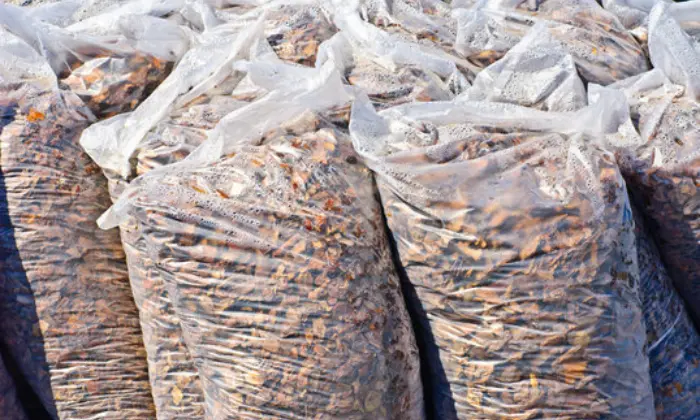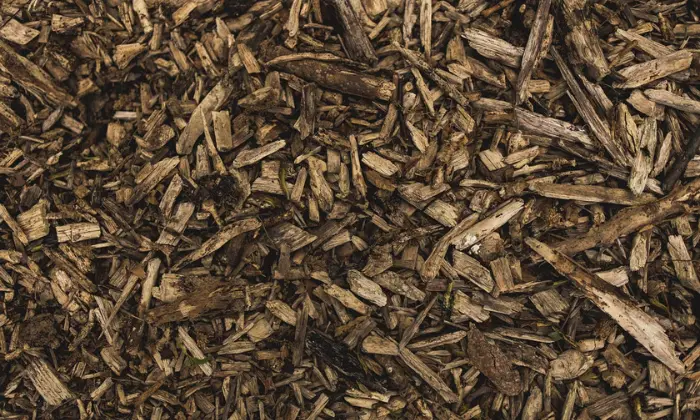Mulch serves as a vital component in landscaping and gardening projects, offering benefits such as moisture retention, weed suppression, and soil insulation. When it comes to purchasing mulch in bulk quantities, understanding how many bags can fit on a pallet is essential for efficient transportation and storage. In this guide, we’ll delve into the considerations surrounding mulch pallet quantities, providing insights tailored to customers of Robert’s Complete Care.
How Many Bags of Mulch on a Pallet
How many bags of mulch on a pallet can vary depending on several factors, including the size and weight of the bags, as well as the supplier’s packaging preferences. However, a standard pallet of mulch typically contains between 45 to 75 bags. This range accounts for variations in bag size, with most bags weighing around 2 cubic feet each.

How Many Bags Of Mulch Are On A Pallet
At Robert’s Complete Care, we offer mulch in standard-sized bags, typically weighing around 2 cubic feet each. A standard pallet used for mulch can typically accommodate between 40 to 60 bags, depending on the specific dimensions of both How many bags of Mulch on a pallet. This estimate provides a general guideline, but it’s crucial to verify the exact capacity with our team to ensure accurate planning for your project.
Factors Affecting Mulch Pallet Quantities
Explore the key factors influencing mulch pallet quantities for efficient landscaping projects.
Bag Size and Weight
Mulch bags come in various sizes and weights, ranging from small residential packs to larger commercial-grade sacks. The dimensions and weight of the bags directly influence how many can be stacked on a pallet while maintaining stability and safety during transportation.
Pallet Dimensions
Pallet sizes can vary across different suppliers and industries. Standard pallet sizes include 48 inches by 40 inches or 42 inches by 42 inches, but custom sizes are also available. The pallet’s dimensions determine how tightly the bags can be packed and how many can be accommodated.
Weight Restrictions
Pallets have weight limits to ensure safe handling and transportation. While mulch bags may seem lightweight individually, stacking too many on a pallet can exceed weight restrictions, risking structural integrity and posing safety hazards during handling and transport.
Tips for Efficient Palletization
Consult with Robert’s Complete Care regarding the specific dimensions and weight capacities of our mulch bags and pallets.
Consider factors such as bag orientation, stacking patterns, and pallet stability when loading mulch onto pallets.
Use appropriate handling equipment, such as forklifts or pallet jacks, to safely maneuver loaded pallets.

How Many Bags in a Yard
When it comes to landscaping projects, Hardwood mulch is a versatile and commonly used material for enhancing the appearance of gardens, suppressing weeds, and retaining moisture in the soil. One of the common questions that arises during mulching endeavors is how many bags of mulch are needed to cover a certain area, particularly in terms of yards. Understanding the relationship between bags of mulch and yards is crucial for efficient planning and budgeting of landscaping projects.
Defining a Yard
Before delving into the calculation of bags of mulch per yard, it’s important to clarify what exactly is meant by a “yard” in this context. In landscaping, a yard typically refers to a cubic yard, which is a unit of volume equal to 27 cubic feet. This unit is commonly used in the United States for measuring bulk materials like mulch, soil, and gravel.
Bag Sizes and Coverage
Mulch is typically sold in bags of various sizes, ranging from small bags containing a few cubic feet to larger bulk bags. The coverage provided by a bag of mulch depends on factors such as the type of mulch, its density, and the depth at which it is spread. Bag sizes commonly range from 1.5 cubic feet to 3 cubic feet.
Calculating Bags per Yard
To determine how many bags of mulch are needed to cover a yard, you’ll first need to calculate the volume of the area to be mulched in cubic yards. This is done by multiplying the length, width, and depth of the area. Once you have the volume in cubic yards, you can then divide it by the volume per bag of mulch to find the number of bags required.
Conclusion
In conclusion, determining the number of bags of mulch that fit on a pallet involves considering various factors to achieve optimal efficiency and safety. By understanding the dimensions of the pallet, the size of the mulch bags, and any relevant guidelines, landscapers and gardeners can make informed decisions to streamline operations and deliver exceptional results. Feel free to Contact Us with any questions or inquiries.
FAQS
How Many Bags Of Mulch Are Typically On A Pallet?
The number of bags on a pallet can vary depending on the size and weight of the bags, as well as the supplier’s specifications. However, a standard pallet of mulch usually contains around 40 to 70 bags.
How Much Area Does A Bag Of Mulch Cover?
The coverage provided by a bag of mulch depends on the depth at which it is spread. As a general guideline, a standard bag of mulch covers approximately 2 cubic feet and can cover about 12 to 24 square feet at a depth of 1 to 2 inches.
How Do I Calculate The Quantity Of Mulch Needed For My Landscaping Project?
To determine the amount of mulch required, multiply the length and width of the area to be mulched to get the square footage. Then, decide on the desired depth of mulch (in inches) and divide by 12 to convert it to feet. Finally, divide the square footage by the depth in feet to find the total cubic feet of mulch needed.
What Are The Benefits Of Using Mulch In Landscaping?
Mulch offers various benefits, including moisture retention, weed suppression, soil insulation, and erosion control. It also enhances the aesthetic appeal of landscaping beds and promotes healthy plant growth by providing a nutrient-rich environment.
Is There A Difference Between Organic And Inorganic Mulch?
Yes, organic mulch, such as wood chips, bark, or compost, decomposes over time, enriching the soil with nutrients. Inorganic mulch, like rubber or stone, does not decompose and primarily serves as a decorative ground cover.


